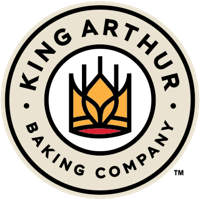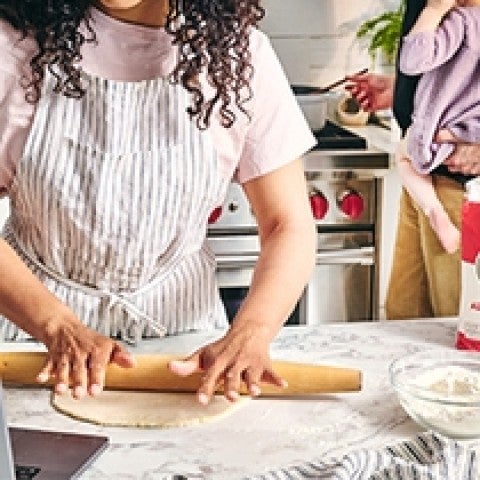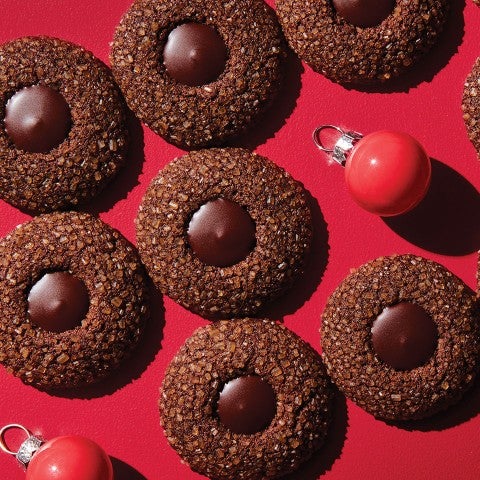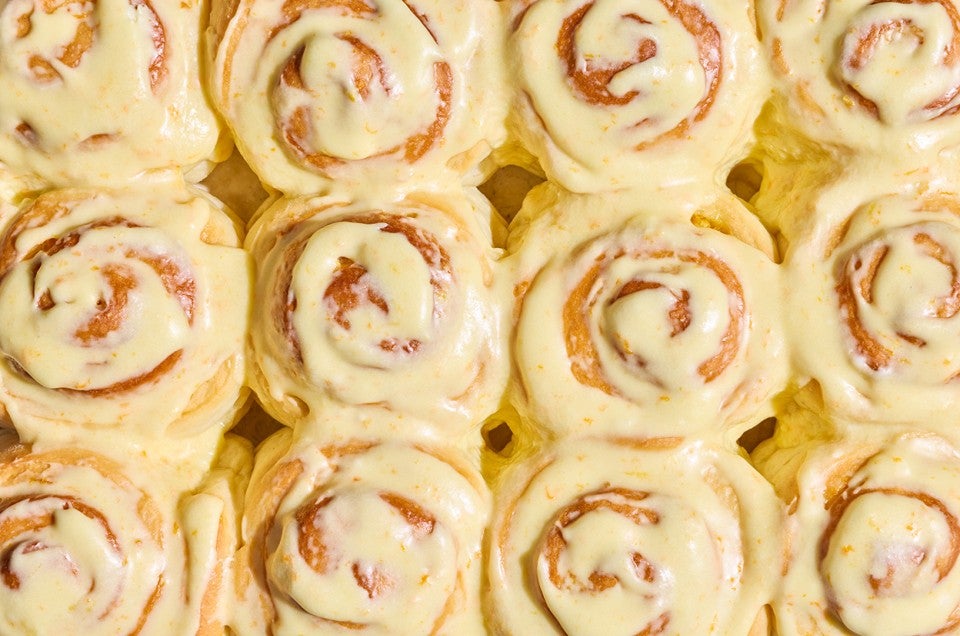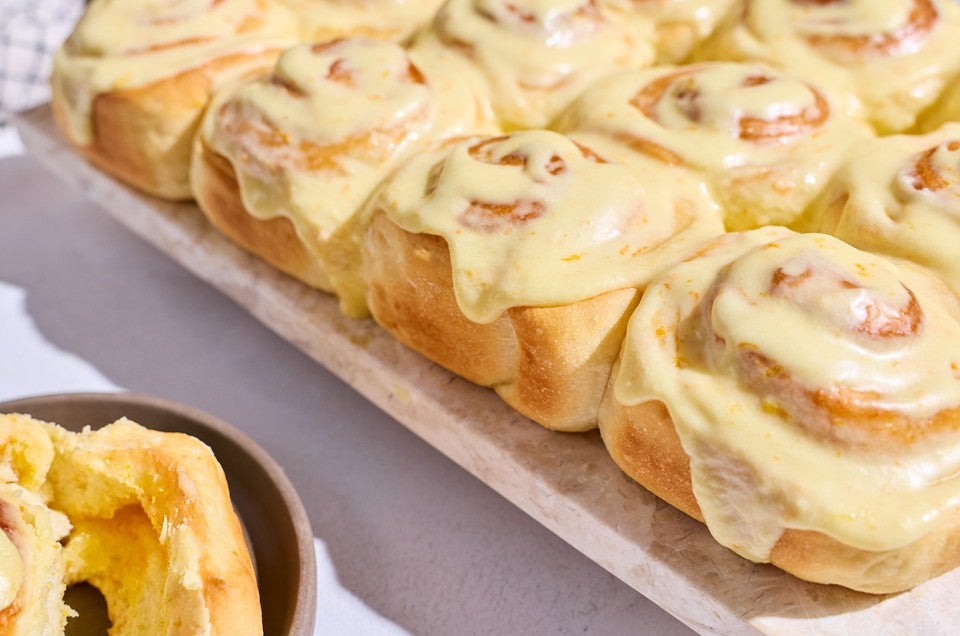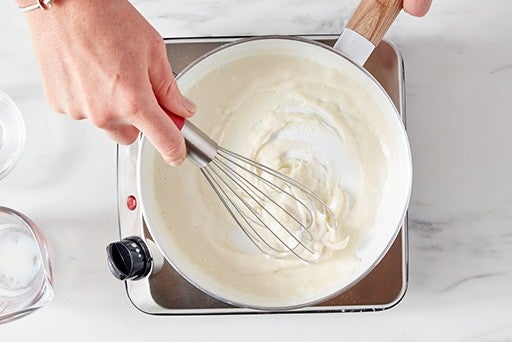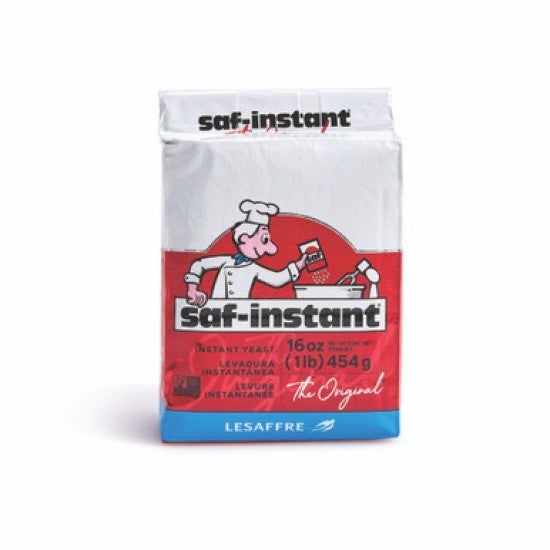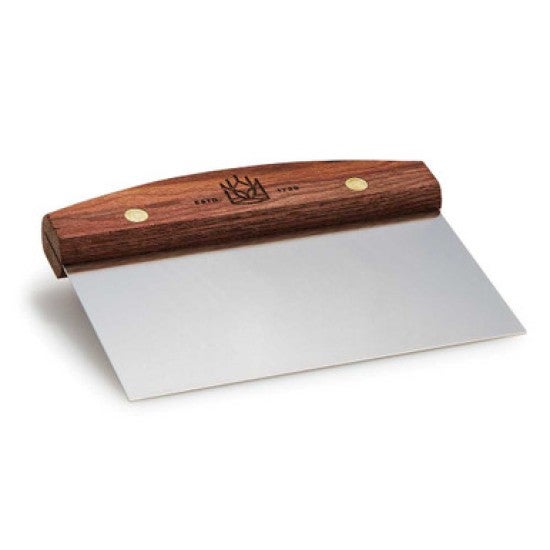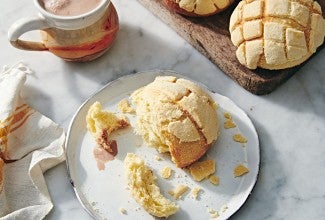-
To make the tangzhong: In a small saucepan, combine the milk and flour and whisk until no lumps remain.
-
Place the saucepan over medium heat and cook the mixture, stirring regularly, until thickened, paste-like, and the spoon or spatula leaves lines on the bottom of the pan. This should take 1 to 3 minutes, depending on the strength of the burner.
-
Remove from the heat and transfer the tangzhong to a large mixing bowl, the bowl of a stand mixer, or the bucket of a bread machine (whatever you plan to knead the dough in).
-
To make the dough: Weigh your flour; or measure it by gently spooning it into a cup, then sweeping off any excess. To the mixing bowl, add the cold milk, then the remaining ingredients in the order listed; the heat from the tangzhong will help to warm the cold milk.
-
Mix — by hand, on low speed of a stand mixer with the dough hook, or in a bread machine set to the dough cycle — to bring the dough together. Next, knead the dough until it’s smooth, elastic, and tacky. This will take up to 15 minutes by hand, 10 to 12 minutes on medium-low speed of a mixer, or the length of the dough cycle in a bread machine.
-
Shape the dough into a ball, place it in a bowl, and cover with plastic wrap or a reusable cover.
-
Let the dough rise until puffy but not necessarily doubled in bulk, about 1 to 1 1/2 hours (depending on the warmth of your kitchen).
-
To make the filling: While the dough is rising, combine the sugar and orange zest in a small bowl. Use your fingertips to rub the zest into the sugar, then add the flour and stir with a fork or flexible spatula to fully combine.
-
To assemble the orange rolls: Preheat the oven to 350°F with the rack in the center. Lightly grease a 9" x 13" pan and line with a parchment sling. Transfer the dough to a lightly floured surface and divide it in half (about 440g per piece).
-
Working with one piece at a time, roll out the dough to a 9" x 15" rectangle, dusting with additional flour as necessary to prevent sticking. For evenly shaped rolls, make the corners of the rectangle as neat and straight as possible.
-
Brush the dough lightly with about 1/2 tablespoon of milk. Sprinkle about half of the filling evenly over the dough, covering all but a 1/2" strip along one long side. Starting with the filling-covered long side, roll the dough into a log. Pinch the seam closed along the length of the uncovered long edge.
-
Score the dough lightly into six equal pieces, each about 2 1/2" wide. Slice the dough into individual rolls at the score marks using dental floss or a sharp chef’s knife.
-
Firmly press the orange rolls to flatten each one to about 3" in diameter, then transfer to the prepared pan, spacing them evenly across half of the pan.
-
Repeat steps 10 through 13 with the remaining piece of dough, milk, and filling.
-
Cover the pan and let the rolls rise at a warm room temperature until they are puffy and slowly bounce back when pressed with a floured finger, about 1 hour. When fully risen, the rolls should completely fill the pan with no large gaps between them.
-
Gently brush the tops of the rolls with additional milk and then bake for 25 to 30 minutes, until they are lightly golden brown on top and a digital thermometer inserted into the center of one roll reads 190°F.
-
Remove the rolls from the oven and place the pan on a rack to cool. Wait 5 minutes, then use the parchment sling to transfer the rolls from the pan to the rack. While the rolls are cooling, prepare the frosting.
-
To make the frosting: In a medium bowl, combine the sugar, butter, zest, salt, and 3 teaspoons of the orange juice. Use a flexible spatula to mix slowly to combine, then more vigorously until the frosting is smooth. Add more orange juice, 1/2 teaspoon at a time, to make a spreadable frosting.
-
Spread the frosting on top of the rolls and serve warm or at room temperature.
-
Storage information: Store leftover orange rolls, covered, at room temperature for up to 3 days.

